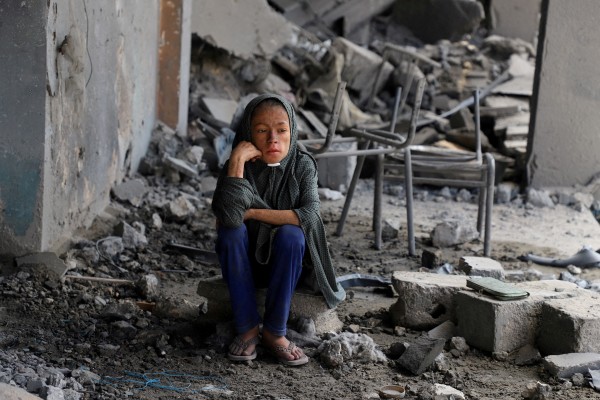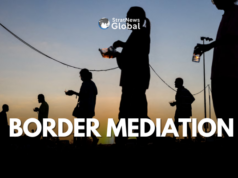
The resurgence of interstate conflict in recent years is striking — but even more remarkable is the parallel surge in political violence and the erosion of respect for norms of order.
In an article for World Politics Review, Dr Paul Poast, associate professor in the Department of Political Science and a nonresident fellow at the Chicago Council on Global Affairs, highlights how lawlessness has grown not only across borders but within states themselves, as the lines between external aggression and internal coercion become blurred.
The result is a world not merely at war, but increasingly willing to embrace force as a tool of politics, domestically and internationally.
Poast warns that the classic paradigm of civil war or interstate conflict is no longer sufficient to capture the current turbulence: instead, we are witnessing a “general acceptance and even encouragement of violence”. He notes that this trend is visible in both the United States and other democracies, where political assassination attempts, attacks on public officials, and violence directed at minorities are no longer fringe events but symptoms of deeper disorder.
Simultaneously, across international theatres, powerful states are flouting sovereignty and even norms of civilian immunity, whether through drone strikes in third countries or direct military incursions. In sum, Poast’s thesis is that international disorder and domestic violence are interconnected expressions of a broader collapse of restraint.
One of the central strengths of Poast’s argument is the empirical grounding: he catalogues recent episodes of political violence in the U.S. — from attempted assassinations of high-profile figures to other targeted killings — and situates them alongside domestic upheavals in Brazil and intensifying cartel-politicised violence in Mexico.
He also points to rising attacks on elected officials in Europe and hostility toward refugees and asylum seekers. On the interstate front, the article highlights Russia’s outright invasion of Ukraine, its drone incursions into Poland and Romania, and Israeli strikes on Hamas targets in Doha—operations that bypass legal norms and flout state sovereignty. Through these examples, Poast shows that the threshold for “acceptable” violence is shifting upward.
Another compelling element is the linkage Poast draws between internal and external forms of violence. He invokes Martin Luther King Jr’s critique that violence abroad erodes moral authority at home, arguing that a state that condones aggressive warfare erodes the legitimacy of nonviolence in its domestic politics.
In his view, policies at home and abroad are not separate; the external posture of force seeps into domestic culture, enabling assaults on political opponents, minorities, or dissenters. In the U.S. context, Poast argues, the Trump administration’s penchant for projecting a warrior image internationally dovetails with long-standing reluctance to restrain guns and political violence domestically. This symbiosis, he suggests, is emblematic of the new age of normalisation of violence.
Yet Poast does not adopt fatalism. He concedes that structural shifts in the international order—namely, the decline of U.S. dominance and rise of multipolar power competition—create incentives for disorder. He also allows for cyclical explanations of domestic violence: perhaps we are merely passing through a particularly intense cycle of political polarisation and breakdown. Nevertheless, he emphasises that even if these currents are transient, their interaction reinforces each other, amplifying the risk that lawlessness becomes entrenched.
Still, some tensions in the article warrant closer reflection.
First, while Poast’s examples are compelling, the leap from episodic violence to broad normalisation is strong — he does not systematically address countervailing trends of institutional resilience (courts, independent media, civil society) that may still check such impulses.
Second, the interface between domestic and international violence is powerful in principle, but the causal pathways remain somewhat underdrawn: do states adopt harsher foreign tactics because domestic constraints weaken, or vice versa? It may be both, but disentangling directionality would sharpen the case.
Third, Poast treats multipolarity as a structural driver but does not fully explore why rising powers might prefer to contest norms rather than incorporate them — that is, why the breakdown occurs rather than a renegotiation of norms under a new order.
Nonetheless, Poast’s warnings are timely and essential. If states perceive that violence is now politically acceptable — whether in drone strikes that cross boundaries or assassination attempts at home — then the threshold for escalation drops dramatically. The mutual reinforcement between domestic breakdown and external adventurism raises the spectre of fracturing diplomatic architectures, regional spillovers, and perpetual cycles of conflict.
Policymakers must take seriously the argument that preserving order is not only about interstate deterrence but also about curbing internal permissiveness toward violence. International actors who condemn foreign violations of sovereignty must also speak up when political leaders normalise assassination, targeted killings, or overt intimidation at home.
Civil society must reassert nonviolent norms, not only as moral bulwarks but also as stabilising frameworks for political contestation — both local and global. And scholars should further investigate the feedback loops Poast sketches: What institutional reforms might sever the vicious cycle between foreign adventurism and domestic coercion?
In the final reckoning, Poast’s piece in World Politics Review delivers a trenchant diagnosis: we now live in a world in which violence is no longer the aberration but increasingly an instrument of politics. The stakes of resisting that shift are existential — to prevent a slide into orderless brutality, states and societies must re-establish restraint, accountability, and a renewed faith in nonviolent rule.
In a career spanning three decades and counting, Ramananda (Ram to his friends) has been the foreign editor of The Telegraph, Outlook Magazine and the New Indian Express. He helped set up rediff.com’s editorial operations in San Jose and New York, helmed sify.com, and was the founder editor of India.com.
His work has featured in national and international publications like the Al Jazeera Centre for Studies, Global Times and Ashahi Shimbun. But his one constant over all these years, he says, has been the attempt to understand rising India’s place in the world.
He can rustle up a mean salad, his oil-less pepper chicken is to die for, and all it takes is some beer and rhythm and blues to rock his soul.
Talk to him about foreign and strategic affairs, media, South Asia, China, and of course India.




